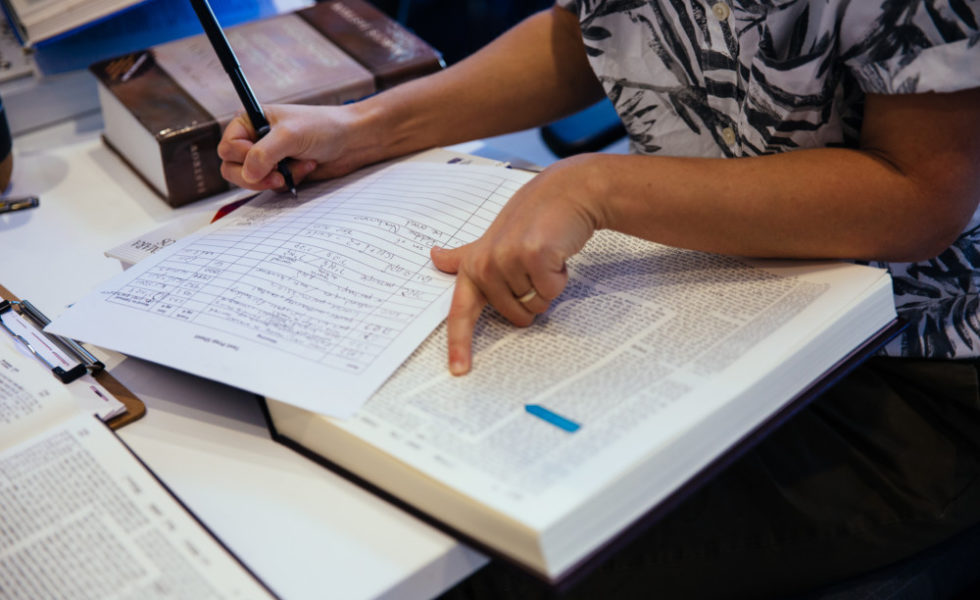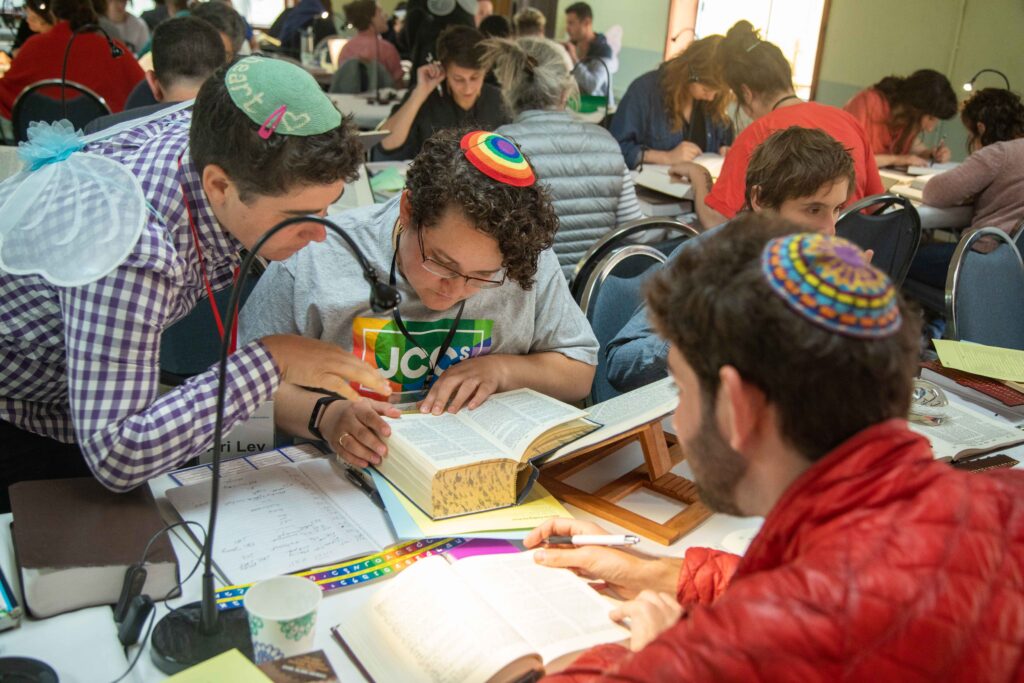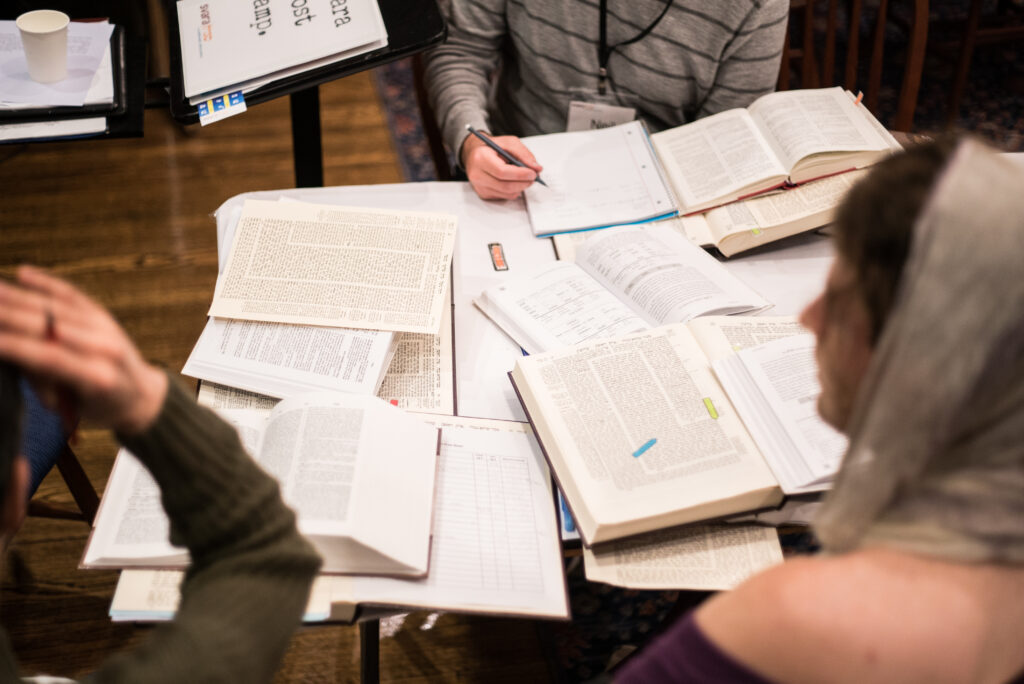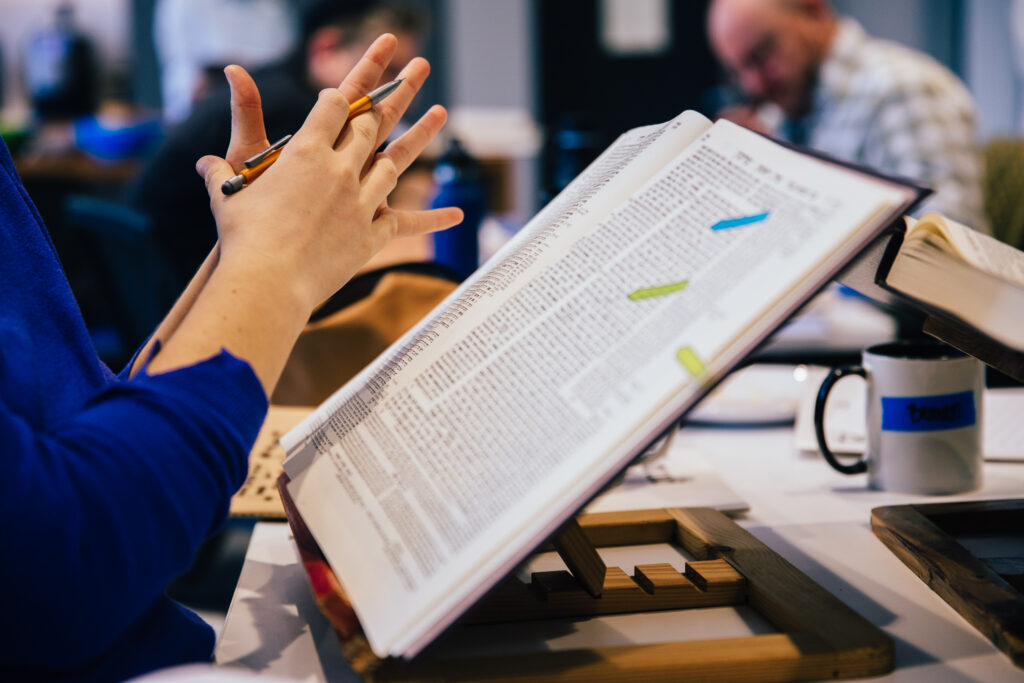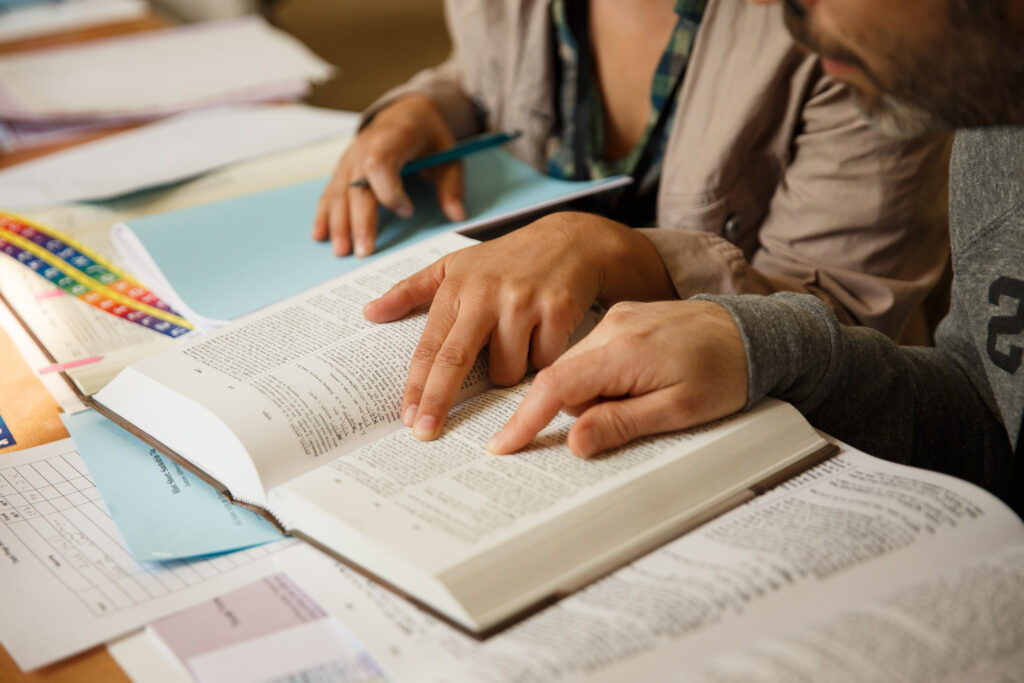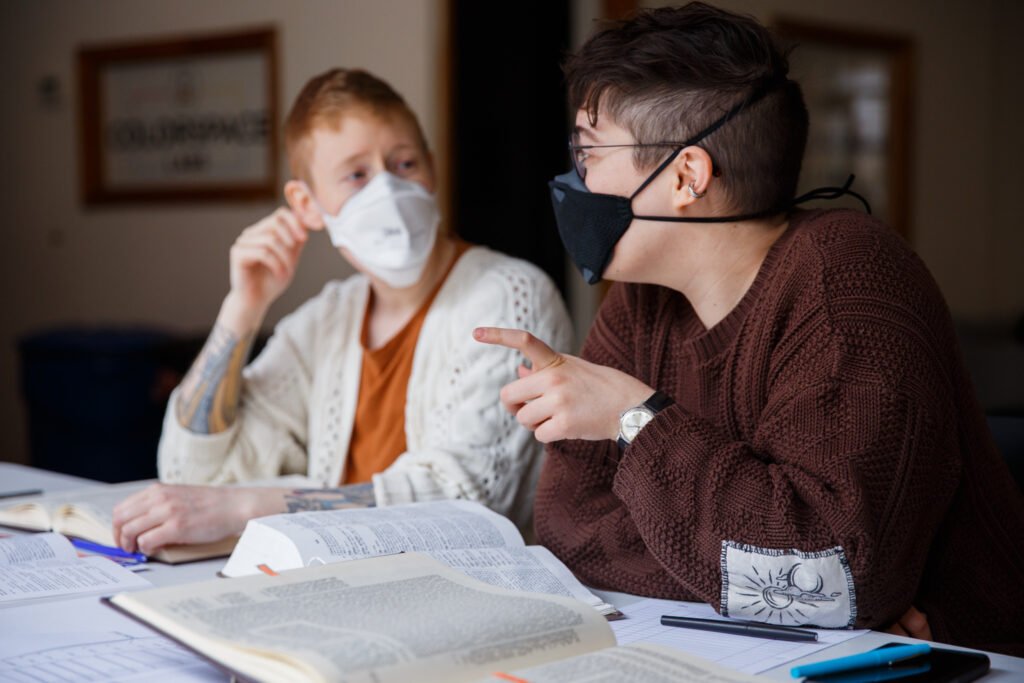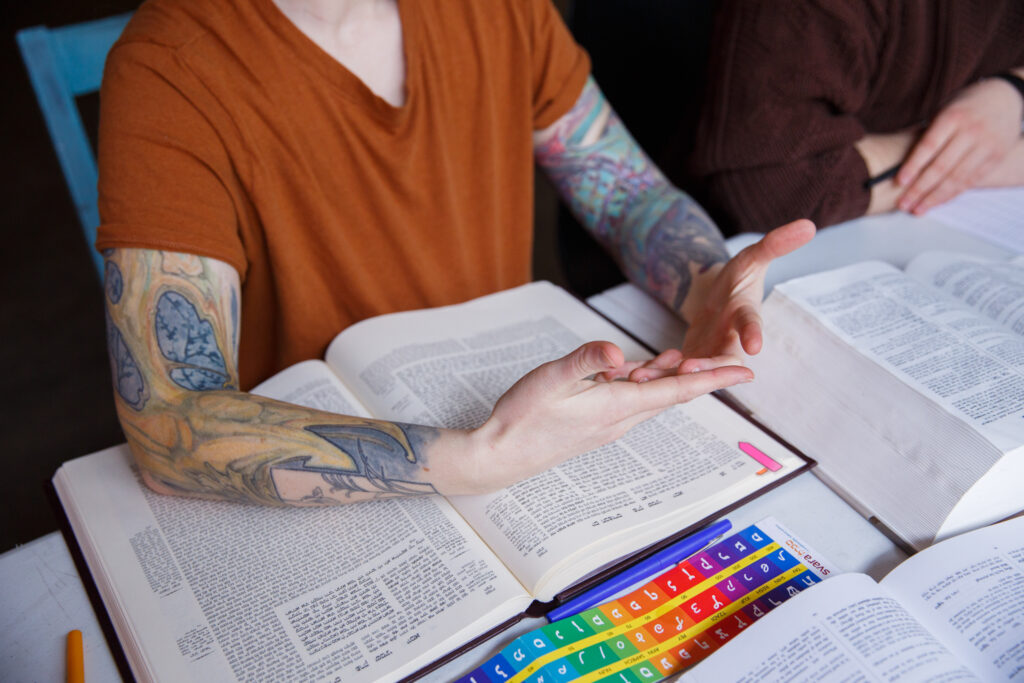When I became the rabbi of a small congregation in Jersey City’s Greenville neighborhood I thought this would be a transition job in a small city outside of NYC. Truthfully I was feeling disillusioned about being a rabbi at all—I had been forced out of my previous rabbinic position for speaking out against Brett Kavanaugh’s confirmation to the Supreme Court, and because, as a board member put it, “your students would probably prefer to learn with a straight male instructor anyway.” So I said to myself— Jersey City, and a tiny little synagogue that just wants one Shabbat a month and the occasional lunch & learn? I can do this and just get myself back together.
Boi, was I about to get WOKE. UP.
After the violence of December 10th, 2019 which resulted in the murders of Moshe Deutsch z”l, Miguel Douglas z”l, Mindy Ferencz z”l, and Detective Joseph Seals z”l, Greenville and Jersey City were thrust into the local, state, and national spotlight, and the usual response ensued—every block in Greenville, it seemed, was patrolled day-in and day-out by police. All the synagogues in the area were amping up their security measures, and the various Jewish Federations convened what felt like weekly instructional sessions on how to optimize security measures. I was approached by a number of my congregants, however, who were suspicious about Greenville’s portrayal in the media. As I started monitoring the responses of many of our neighbors, mostly POC, I became suspicious too. Greenville is a neighborhood that has been neglected for years by the municipality. Greenville is also a neighborhood rampant with gun violence, and I learned quickly from lead activists in Jersey City that while the JCPD was a regular presence post-incident, there has been little-to-no follow up with regard to violence prevention or culturally-specific youth and family trauma counseling even after a $100,000 Community Violence Needs Assessment, paid for by Jersey City residents’ taxes, had been conducted between August-October 2019.
I have been fortunate these last few months to be learning from some of the most incredible rabbis- teachers, I have ever known—and they are all activists, POC, who have been fighting the good fight to help Greenville thrive. There’s Pamela Johnson of the Jersey City Anti-Violence Coalition; Sandra Lovely of the I Love Greenville Neighborhood Association; Educational Gilmore, Lilia Diaz, Nevin Perkins of Blackmen United, Denis Febo of AmendTheThirteenth, and A’Dreana Williams, just 18-years old, of The Black Diaspora Club. To do them and their work justice would take hundreds of pages, but the essential lesson they have taught me is this: in order to fight for our communities, we must truly be a part of the community.
That’s why it is more important than ever for my synagogue, Bnai Jacob, in Greenville, to actively protest police brutality and demand judicial accountability when excessive police force is used, and to deeply question if a police presence at our synagogue for security is actually exacerbating a problem plaguing our community. We have to ask this question because, as the Talmud teaches in Pirkei Avot 2:5 “Do not separate yourself from the community.” We are a Greenville synagogue, Greenville is our community, and police brutality is a problem here.
As protests and riots arose across this country, Mayor Steven Fulop decried calls to defund the police, saying that “it would never work in Jersey City”. The JC municipal budget 2020 shows 44% dedicated to public safety (33% of that allotted to police salaries) and less than 1% donated to Health & Human Services, which includes the divisions of Veteran Affairs, Immigrant Affairs, Women Infants and Children (WIC), Senior Affairs, and Disease Prevention (yes, like COVID-19 testing and tracking). Seeing these kinds of numbers has made me question—what kind of city is this whose government places so little value on human life? And let me be clear—it’s not the citizens. Jersey City residents are fiercely loyal and civically active, and while there are those on the city council and in other departments who are also fighting the good fight, there is clearly something amiss at the highest levels of governance.
My brilliant and courageous teacher, Rabbi Benay Lappe (and yours, too ☺)— wrote last week about the necessity for the needs of a justice system to be understood in and on their own terms, untranslated. Following in her fabulous footsteps, let’s continue from Sanhedrin 17a into Sanhedrin 17b, in which we learn the following:
ותניא כל עיר שאין בה עשרה דברים הללו אין תלמיד חכם רשאי לדור בתוכה בית דין מכין ועונשין וקופה של צדקה נגבית בשנים ומתחלקת בשלשה ובית הכנסת ובית המרחץ וביהכ”ס רופא ואומן ולבלר (וטבח) ומלמד תינוקות משום ר’ עקיבא אמרו אף מיני פירא מפני שמיני פירא מאירין את העינים
We learn in a braita—any city which does not have these 10 things, a Torah scholar is not permitted to live within it: a Beit Din that can flog and administer punishments, a charity fund that is collected by two but distributed by three, a synagogue, a bathhouse, a bathroom, a doctor, a bloodletter, a scribe, a ritual slaughterer, and a teacher for young children. They said in the name of Rabbi Akiva- also different types of fruits because different types of fruits brighten the eyes.
Here we see our radical resistance ancestors (who were most likely living in an extensively policed state under Roman occupation) describing a proper city as one that meets the many needs of its community members—charity that is distributed fairly based off of a persons’ needs and number of dependents (see Rashi on Bava Batra 8b:5), a place for worship, multiple safe locales and professionals dedicated to public health, a scribe for the writing of sacred books and legal documents (see Jastrow entry on לבלר) education, and even requires that the city be able to provide diverse foods for nutrition (no food deserts for these fairy-ancestors).
Now check this—here are two other renditions of this tradition in later sources:
משנה תורה, הלכות דעות ד׳:כ״ג
כָּל עִיר שֶׁאֵין בָּהּ עֲשָׂרָה דְּבָרִים הָאֵלּוּ אֵין תַּלְמִיד חָכָם רַשַּׁאי לָדוּר בְּתוֹכָהּ. וְאֵלּוּ הֵן: רוֹפֵא. וְאֻמָּן. וּבֵית הַמֶּרְחָץ. וּבֵית הַכִּסֵּא. וּמַיִם מְצוּיִין כְּגוֹן נָהָר וּמַעְיָן. וּבֵית הַכְּנֶסֶת. וּמְלַמֵּד תִּינוֹקוֹת. וְלַבְלָר. וְגַבַּאי צְדָקָה. וּבֵית דִּין מַכִּים וְחוֹבְשִׁים
Rambam (Maimonides) Mishneh Torah Hilkhot De’ot (12th century)
Any city which does not have in it these ten things a Torah scholar is not permitted to live within it: a doctor, a bloodletter, a bathhouse, a bathroom, excellent running water sources such as a river or spring, a synagogue, a teacher of children, a scribe, charity collectors, and a Beit Din to flog and to imprison.
אוצר מדרשים, חופת אליהו, חופת אליהו רבה רל״ב
כל עיר שאין בה תשעה דברים הללו אין תלמיד חכם רשאי לדור בתוכה, ואלו הן: בית הכנסת, ובית ישיבה, ובית המדרש לתינוקות, ובית דין, ובית מרחץ, וקופה של רוכלים, וקופה של צדקה, ומקוה, ופירות. ר״ע אומר לפי שמיני פירות מאירין עיניו של אדם
Otzar Midrashim Chuppat Eliyahu Rabbah (1915, an anthology of “minor midrashim” collected by scholar Julius Eisenstein)
Any city which does not have in it these nine things a Torah scholar is not permitted to live within it, and these are they: a synagogue, a yeshiva, a beit midrash for young children, a beit din, a bathhouse, a collection for merchants, a collection for charity, a mikveh, and fruit. Rabbi Akiva said this is because different kinds of fruit brighten a person’s eyes.
For Rambam, the emphasis on an excellent source of running water shows his concern and expertise, as a physician, about public health. Otzar Midrashim’s emphasis on the various levels of education (yeshiva vs. beit midrash, and the specification of mikveh!) and different kinds of collections (one for merchants and one for tzedakah) perhaps demonstrates the midrash’s concerns about different levels of access in any given city. The consistent point across the spectrum of these tradents is that the Beit Din is only one tenth (or one ninth) of the full picture of the proper city for a Torah scholar to live in. And even with that, the role of the Beit Din is inconsistent in these sources as to whether their role is ritual or civil (let alone to what degree a beit din ever had independent power from the secular authorities to imprison someone in the Diaspora).
I think the most important lesson in this, however, is that the Torah scholar’s obligation actually goes far beyond living in a city that prioritizes all of these things, but that the Torah scholar has a responsibility to be a part of building such a city. I was devastated when I left my position in NYC and wondered if I would ever feel the same spark I once felt about being an artistic activist rabbi shaking up the system from within, especially when I lost the fight so badly. But learning and teaching with SVARA has taught me to understand my queer rabbinic self as a descendent of radical fairy rabbis who also lost the fight from time to time, but they didn’t desist from the task (Pirkei Avot 2:16). So I say to you, my family, my Am (people)—we still have a lot of righteous work to do that we are not free to desist from. Let’s work towards defunding the police and building the cities that we, as Torah and Talmud scholars, and all people of the earth, should have access to living in.

